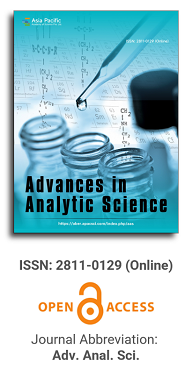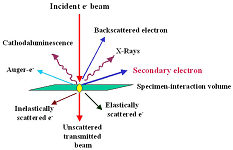
Asia Pacific Academy of Science Pte. Ltd. (APACSCI) specializes in international journal publishing. APACSCI adopts the open access publishing model and provides an important communication bridge for academic groups whose interest fields include engineering, technology, medicine, computer, mathematics, agriculture and forestry, and environment.

Medicinal plants and foods contain various inorganic elements, and chemical analysis in this issue helps detect their pharmacological effects and ensure food safety. Regional variations in inorganic element content due to environmental factors are crucial for maintaining the quality and safety of these products.
Issue release: 31 December 2020
This resarch aims to study the characteristics of fifteen inorganic elements in eight components of Chuanxiong Cha Tiao San by the ICP-MS method. An ICP-MS method is established to determine the content of 15 inorganic elements in the 8-component medicines of Chuanxiong Cha Tiao San. A characteristic profile for these 15 inorganic elements in the medicines is created. We use SIMCA-PCA to analyze the differences among the 8 components medicines, and principal component analysis (PCA) is also employed to identify the common inorganic elements responsible for the wind-dispelling and pain-relieving effects of Chuanxiong, Qianghuo, Baizhi, Xixin, Jingjie, Fangfeng, and Bohe. The Student-Newman-Keuls is used to compare the differences in the common efficacy-related inorganic elements among these 7 herbs. We found that the characteristic profile of fifteen inorganic elements in the eight component medicine of Chuanxiong Cha Tiao San are strongly defined. From SIMCA-PCA, the 3D scatter plot shows a significant difference between Licorice and the other 7 herbs. By analysising the main component, it indicates that the common inorganic elements contributing to the wind-dispelling and exterior-releasing effects of Chuanxiong, Qianghuo, Baizhi, Xixin, Jingjie, Fangfeng, and Bohe are Mg, K, and S. Among the 7 herbs, the differences in Mg and S were not statistically significant, while the difference in K was statistically significant. From this research, we can know that the ICP-MS method is accurate, reliable and reproducible, the difference in the inorganic element profiles among the 8 components is significant, and the common efficacy-related inorganic elements is Mg, K and S.
Issue release: 31 December 2020
Using microwave digestion and inductively coupled plasma atomic emission spectroscopy (ICP-AES), 28 inorganic elements were analyzed in 40 batches of safflower (Carthamus tinctorius Linn.) samples, which are the dried tubular flowers, from Anhui, Gansu, Jiangsu, Xinjiang, and Yunnan. The results revealed the following: Among the heavy metals, copper (Cu) had the highest concentration across all 40 batches of safflower samples, with mercury (Hg) and lead (Pb) also being relatively high. Safflower samples from Yunnan had significantly higher Hg levels compared to those from other provinces. The levels of Pb and Cu among samples from different provinces were generally not significantly different, while arsenic (As) and cadmium (Cd) levels were either low or undetectable. Among the major elements, potassium (K) had the highest concentration, phosphorus (P) and magnesium (Mg) were lower, and sodium (Na) had the lowest concentration. Safflower samples from Gansu had significantly higher Na and Mg concentrations, and samples from Yunnan and Xinjiang had higher P levels compared to those from other provinces. Safflower samples from Yunnan had significantly lower K levels compared to samples from other provinces, and there were no significant differences in K levels among samples from the other provinces. In the case of essential trace elements, iron (Fe) and boron (B) were relatively high, while nickel (Ni) was the lowest. Safflower samples from Xinjiang and Gansu had higher chromium (Cr) levels, and samples from Gansu had the highest levels of manganese (Mn), Fe, Ni, and strontium (Sr), while samples from Anhui had the highest levels of Zn and B. Conversely, samples from Jiangsu had the lowest levels of Cr, Mn, Fe, and Ni; Gansu samples had the lowest Zn levels; and Yunnan samples had the lowest Sr and B levels. Principal component analysis and cluster analysis showed that safflower samples from the same province tended to cluster together. Specifically, samples from Anhui and Jiangsu clustered closely, samples from Gansu and Xinjiang were relatively close, and samples from Yunnan were more distanced from those of other provinces. This study established a rapid and accurate method for determining the inorganic element content in safflower, and the results indicated notable differences in inorganic element content among safflower samples from different origins.
Issue release: 31 December 2020
Objective: To analyze the inorganic elements of Vespula vulgaris Smith from different regions systematically, create an inorganic element fingerprint spectrum, and establish the basis to control the quality of Vespula vulgaris Smith. Methods: Microwave digestion with inductively coupled plasma (ICP) was used to determine 20 types of inorganic elements in Vespula vulgaris Smith and create a fingerprint spectrum for inorganic elements, conducting analyses of metal elements. Results: The species of metal elements in Vespula vulgaris Smith are rich in P, K, Na, Mg, Ca, which account for 92.32% of the total. The content of harmful elements such as Pb, Cd, As, Hg, Cu meets the requirements of National Pharmacopoeia Standards. There are different metal elements in Vespula vulgaris Smith in different regions. According to the inorganic element spectrum, the content of inorganic elements exhibits a similar distribution tendency in the order of the atomic numbers. Conclusion: Vespula vulgaris Smith contains a rich variety of metal elements, including many beneficial microelements, and the content of harmful metal elements meets the requirements of the Pharmacopoeia. The inorganic element fingerprint spectrum of Vespula vulgaris Smith can provide a reference for the identification of Vespula vulgaris Smith.
Issue release: 31 December 2020
By analyzing the inorganic elements in radix pseudostellariae from Guizhou, our goal is to evaluate its quality, establish heavy metal limits, create an element fingerprint, and identify characteristic elements. We measured the inorganic elements using ICP-MS, evaluated heavy metals according to WM/T2-2004 standards, and used principal component analysis to identify key elements. Results showed inorganic element content ranged from 0.057 to 959 mg/kg, with coefficients of variation from 0.134 to 1.478. Levels of Cd, As, Pb, and Hg were below WM/T2-2004 standards in 90% of the samples. The proposed heavy metal limits are Cr ≤ 6.5 mg/kg, Cu ≤ 10 mg/kg, As ≤ 2.0 mg/kg, Cd ≤ 0.3 mg/kg, Hg ≤ 0.15 mg/kg, and Pb ≤ 4.0 mg/kg. The element fingerprint provides a basis for assessing radix pseudostellariae quality and differentiating it from other Chinese herbs. Characteristic inorganic elements identified include Cd, Cu, Co, Zn, Fe, Ca, Mg, and Al. The study found radix pseudostellariae from Guizhou to have a rich inorganic profile, with heavy metal content meeting evaluation criteria, and established both limits and an element fingerprint.
Issue release: 31 December 2020
Inorganic elements play a crucial role in both nutrition and health safety. Analyzing these elements in food helps assess its nutritional value, prevent the consumption of toxic or harmful substances, and understand the extent of contamination to identify and control pollution sources. Additionally, it aids in the production and development of fortified foods, enhances food processing technologies, and improves overall food quality. Therefore, monitoring and detecting inorganic elements during food production is essential. This paper reviews the main methods and characteristics of inorganic element analysis in food, both domestically and internationally, highlighting trends in analytical techniques, including traditional chemical and physical methods, as well as recent advances in nanotechnology and biotechnology. It also summarizes the practical applications of these analytical methods in recent years.
1.jpg)
Prof. Sivanesan Subramanian
Anna University, India


 Open Access
Open Access



.jpg)
